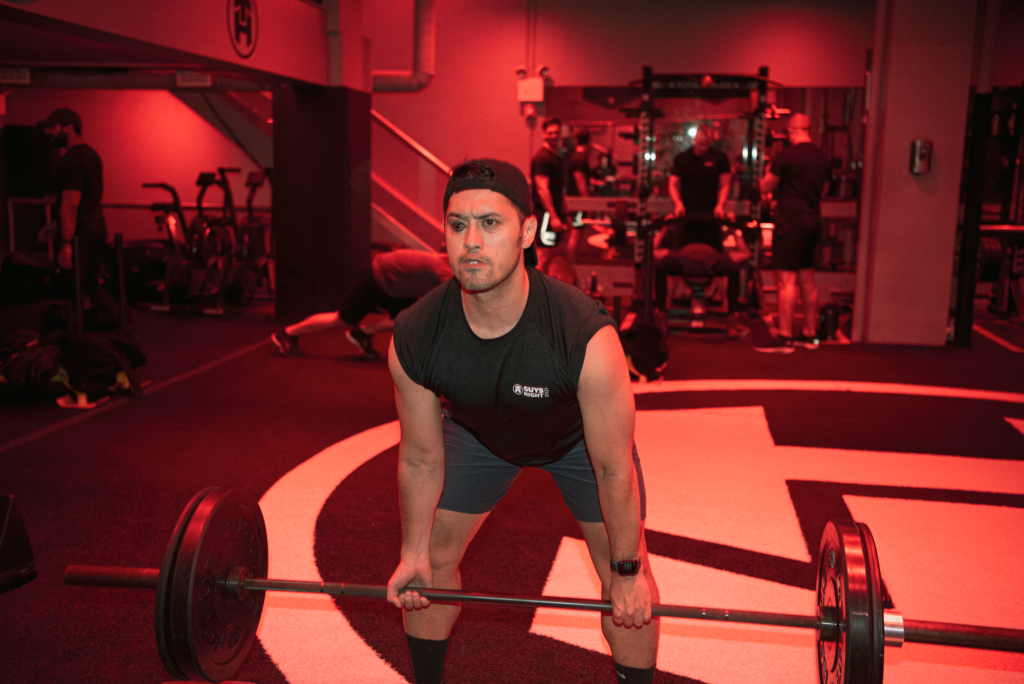The Breakdown Interview, transcribed by Kay Rivera.
The First Annual Tone House Lift Off is quickly approaching the House, and our athletes have been asking questions on how they can perform their best. Outside of the physical preparation, athletes need to properly fuel themselves in order to function at their very best in training and during competition.
On this month’s IG Live of The Breakdown, Coach Natalia speaks with own in-House Sports Dietitian, Ryan Turner, RD, CSSD of Food is Fuel NYC to talk about performance recommendations, the Muscle Build Challenge, weight classes, and fueling metrics.
We’re less than two months out from Game Day, which is perfect timing to start dialing into your nutrition and training to optimize your performance. From a broad perspective, what would be your top 3 recommendations for people training for the Lift Off, or any strength-based competition?
This is definitely something where we see a wide range of mentalities coming through the House and we see them in the gym all the time. When we’re really focusing on strength, power, explosiveness, the diet can definitely change in a way to support all of this. We’re not going to be so body composition focused. We want to make sure that we’re eating for performance.
- Fueling – Are you fueling yourself appropriately? Are you eating before your lifts, which is associated with more strength, more power, more explosiveness?
- Sleep – If we’re not really prioritizing sleep appropriately, and I’m going to say if we’re getting six less hours of sleep a night, we’re likely going to put ourselves in more of a catabolic or muscle breakdown kind of state.
- Supplementation – We know that we should always end up being food first. If we say that we are “food only,” we’re leaving so much off the table for you and especially for athletes that are performing at a high level right now. Two supplements to consider are Creatine and Omega-3.

So we’ve actually have the Muscle Build Challenge coming up this November that is actually PERFECT for Lift Off Competitors. Ryan, could you tell us about that challenge and who it’s for?
The Muscle Build Challenge is a way for you to learn. It’s a way to make sure we take away the fear and the perceived risks of eating and fueling your body appropriately. If you are someone who wants to understand why they are not hitting the weights they want to hit in the gym or feel putting on some muscle is going to help with their aesthetic later, this is the challenge for you. Learn, make mistakes, have people on your side, challenge yourself and eat in a different way. Stop doing the things that you always do if you haven’t been seeing the results that you wanted to see.
The Muscle Build Challenge is especially for someone that into the Lift Off, it’s going to be a way for you to maximize the opportunity to understand now and in the future of going through a period of fueling yourself appropriately. But also right into the Lift Off, you’re going to be stronger and more explosive. You are going to be able to hit the weights that you really want to end up hitting.

In addressing a frequently asked topic – navigating the weight classes. There are three available weight classes per gender division. As a reminder: competitors that fall in light or middleweight may choose to compete in a HIGHER weight class than their bodyweight, but competitors may not move down a weight class unless their BW falls in that category.
Many competitors may fall right on the cusp of a weight class, & may decide if they should ‘cut’ for a lower weight class, or maintain their current weight & and focus on building their Strength. What advice can you share as a general guideline for competitors who are between weight classes?
The answer depends. I think it’s more important to understand that just because you can drop weight doesn’t mean you should. I think what’s going to be important is to understand where you’re at.
First off, when you are looking to drop weight, you’re looking to lose body fat. You are taking yourself away from the ability to actually either build muscle or perform at your highest level.
You’re eating for performance. If you are somebody who is at 175, the higher part of the men’s middle weight class. It will be a pretty big drop for you to get to your lightweight class. What I would really want someone to understand is that we would only want you losing .5 to 1% of your weight per week. 10 lbs is going to be aggressive. I would tell anyone that if you’re looking to lose 10 lbs or more by the time the Lift Off on December 10th, you are going to compromise your strength. If you are someone who is maybe closer to 6 to 3 lbs away, you can maybe do it a little bit safer. But the smaller you are, the leaner you are, it’s going to get a little bit more challenging and it’s going to get it’s just going to compromise your overall performance there. Take it all into account.
Question yourself: why do you really want to drop into a lower weight class? I think this is a great opportunity just to test your test your strength in a different way. I would check in on yourself there for the reason you’re doing it.
In terms of broad macros, how can athletes better prep and better fuel themselves leading into the competition?
Number one is to question whether you’re doing what you need to do with your nutrition right now, take a look and see. Are you someone who is challenged with hunger? Are you challenged with your sleep patterns? Are you challenged with even bowel movements? Are you irritable? A lot of those things can tell us that maybe we aren’t eating optimally. So without numbers, there are ways just to kind of look into what we’re doing and maybe noticing that we should just change something.
If you are are like a lot of people know, you want to see things more numerically. Starting with calories, we want to be somewhere around 13.5 to 14.5 calories per pound. Anything under that, you are most likely undereating. And you don’t need to be higher than that unless your goals are going to be necessary for it.
And the other other three things to remember for your macronutrients is to follow the 0.5, 1, and 1.5 rule per pound of body weight:
- .5 gram of fat
- 1 gram of protein
- 1.5 of carbohydrate
Following the caloric rule and macronutrients, you’re going to be fueling for maintenance and strength.
Looking for additional nutrition support? Book a complementary Discovery Call or a single nutrition assessment with Ryan to get you on track to reach your body and performance goals.
